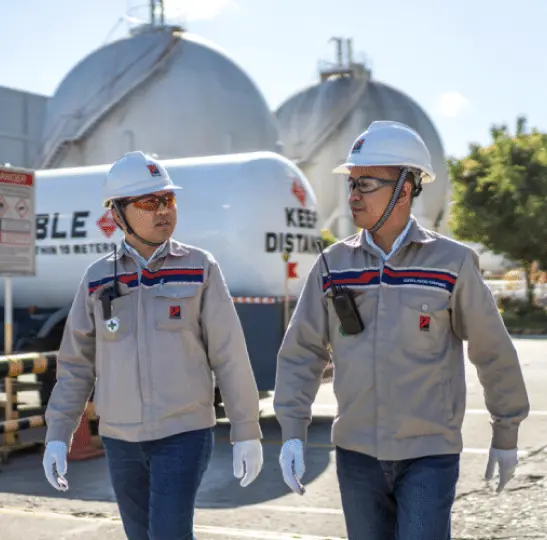Risk Management
Risk management in the current context no longer serves its sole purpose of avoiding risks; rather, it evolved to become a structure in decision making that maximizes opportunities to achieve business objectives while maintaining risks at acceptable levels for the company. We have been practicing risk management since the late 1990s but are on our way to formally adopting an Enterprise Risk Management (ERM) framework within 2023.
We have institutionalized the ERM process in SMC parent company with the assistance of SGV & Co. We collaborated with representatives from our different departments to ensure a holistic and cross-functional view of the exposures faced by the Group. We identified and prioritized critical business risks and developed risk strategies to manage or mitigate the occurrence and impact of the risks. We crafted comprehensive action plans to implement these strategies.
Our Risk Management Executive Team, headed by our Chief Risk Officer, defines our risk priorities, aligns risk policies and strategies with our overall company plan, monitors the effectiveness of our strategies, and reports the status of implementation of our action plans pertaining to risks.
As risks and opportunities emerge over time, we will make evaluations periodically to keep abreast of the exposures of the company and assure stakeholders that our management is fully updated on the potential threats surrounding the continuous operation of SMC.
A key exposure that presents significant risk to the continuity of our operations is climate change. Climate-related catastrophes—such as typhoons, droughts, and floods—may disrupt our operations and the delivery of our products and services. As such, we continue to develop initiatives to both mitigate and adapt to ongoing and possible impacts of climate change.
In today’s rapidly evolving business landscape, we are committed to maintaining a robust risk management framework that enables us to seize opportunities and achieve our objectives.
Currently we are looking into how the guidelines of the TCFD can be incorporated into our current ERM structure.
Another potential risk is in the area of procuring goods and services. At San Miguel, we recognize the immense importance of procurement in our operations and the impact it can have on our business. Thus, we have established the Procurement Governance Group (PGG), which exercises guidance and oversight over procurement activities across San Miguel. The PGG is responsible for (1) reviewing existing procurement policies, guidelines, and procedures, and establishing necessary and appropriate process improvements in collaboration with all functions concerned; (2) conducting compliance and operational audits on procurement transactions; and (3) identifying training programs for existing personnel to enhance their skills in all aspects of the purchasing process. In addition, as part of our pre-emptive measures, procurement personnel are periodically rotated among different business units. This will not only serve as a preventive measure, but also provide our staff with valuable developmental opportunities.
In today’s rapidly evolving business landscape, we are committed to maintaining a robust risk management framework that enables us to seize opportunities and achieve our objectives. By keeping a keen eye on emerging risks, such as climate change, and taking pre-emptive measures to address them, we are ensuring the continuity of our operations and strengthening the trust of our stakeholders in our brand.
